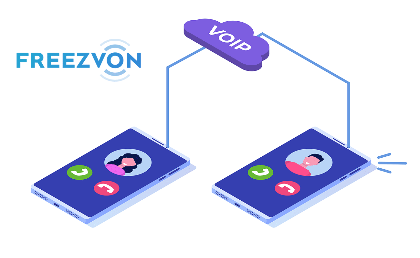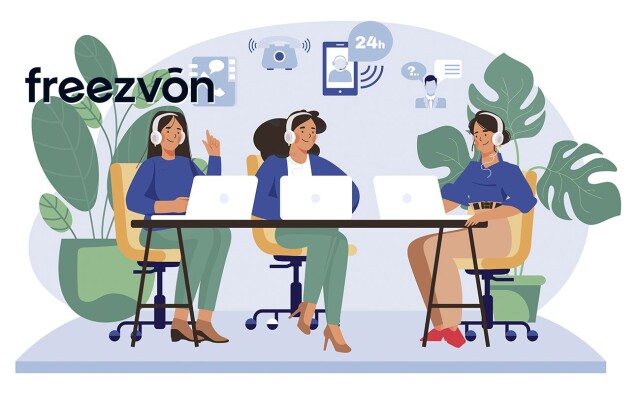Whether you are just starting out or working on modernizing the process, there are some great features you may or may not know about that will increase your call center's results.
1. Professionally made greeting
It's all about first impressions. For a customer or a prospect who never contacted you before, it starts with what they hear when they dial your phone number.
Things you should avoid:
- Dial tone. It makes you indistinguishable from any other, and also looks more like they are calling a private person and not a company or a professional;
- Music. While it may be less boring to hear a catchy tune or a classic ballad, but it's more of a hold music thing than what your client should hear when they contact you. It looks are unprofessional and does not clear up if they had reached the destination they wanted.
Nowadays, people expect a concise, clear indication of who they had reached.
You can also use your greeting to:
- inform your customers about business hours,
- mention new offers or discounts,
- or other things you want them to know about.
Keep in mind that it's best to keep the greeting short otherwise, the experience leaves the professional camp straight to frustrating.
In certain countries, you also need to warn customers if you are recording calls. Usually, an announcement along the lines, "Your call may be recorded for quality increase purposes", is enough. International laws could be different from country to country, so please research it before implementing call recording.
You can record the greeting message yourself by using free voice recording software like Audacity.
Alternatively, you can order a custom-made greeting done by a professional announcer.
2. Call recording
Reasons, why you should have call recording enabled, are so numerous, it's easier to list why you shouldn't. Which is, really, only the case if it's prohibited in your country.
Reasons why it's so important to every business to keep track of all the nuances of customer-agent interaction:
- For quality purposes. Yes, it is the real and the most important purpose of the call recording when you're dealing with customers. No matter the size of your company, how do you and your agents/sales managers/support team talk to the customer is arguably more important than the actual goods or services you provide. Nowadays, when world markets globalized more than ever and everything is within reach with an Internet connection, it's more about the experience than anything else. So take your time to check the recordings of customer calls, see who among your employees needs additional training, which calling scripts work and does not, and how you can improve your customer experience overall;
- Checking the details. Sometimes it's difficult for the agent, especially a new one or in time of an unexpectedly high volume of calls, to keep up with all the details of a conversation. And it might be very important in the future, so you want a way to go back and check what your customer has actually said about what they need. Also, it's always a great idea to have an order confirmation for any disputable situations;
- Regulations. In certain industries, for certain countries, there are regulations and procedures which a company has to comply with. For example, for the USA it is Legal, Finance, Medical industries. Call recording may be used to prove it is not in violation of these procedures and regulations.
Improving customer experience, increasing sales, leaving no chance of missed information, or protecting yourself from the lawsuit, call recording is essential to any business, no matter what the end goal is.
And the only thing you need to set it up is an email address where call recordings will be forwarded.
Prices of call center features Get call center features
3. Managing call queues
There are two types of call queues, inbound and outbound.
Outgoing calls are managed with outbound queues and incoming calls with inbound.
How do you manage a queue and why do you need to do it?
The less a customer waits on the line, the more pleasant the interaction for your business it is for them. So setting up an inbound call queue that minimizes the wait time and keeps all your agents equally engaged, without anyone getting idle or overworked (both things decrease the overall efficiency and productivity), is a must.
Other possible uses of inbound call queues:
- Forwarding incoming calls depending on time or day of the week can efficiently distribute calls between your day shift and night shift agents, between your regular and outsourced call center, between your office and one on-call employee during holidays, etc;
- You can forward calls outside of the business hours straight to voicemail so no call will be missed;
- Parallel forwarding can be used to forward all incoming calls to all the agents. The one who is free and does so first can do so. Which could make your agents more motivated to be engaged, if you make it one of your KPI;
- Call forwarding in succession is set up to route calls that way, so if the first agent does not (unable) to answer, after a certain time period it will be forwarded to the next agent and the next. The endpoint of this queue could be the manager. A great option to keep an eye on the workload. If you getting a call to your mobile, you know you don't have enough agents on shift for this call volume.
Outbound call queues used mainly to allow/disallow certain destinations for certain agents. For example, you have an international customer base. You can set the queue so the customers from the UK got a call from London, from the USA from New York, and so on.
You can also use outbound call queues to restrict access for International communication if needed.
Actually setting up the call queue could be a lot of work for someone who has never done it before. This is why we offer our help with that.
4. Call history
You don't get any better operational customer data insights than by analyzing call history. It's not just a tool to track who called you and who you called. You need it both for a clear picture of your operational costs vs results, as well as for forecasting.
Call metrics it's important to keep an eye on:
- Call Volume;
- Call Abandonment;
- Occupancy Rate;
- Average Handling Time;
- Missed Calls;
- Call Time;
- Service Level;
- Outbound Calls, Contact and Hit Rate.
There are many more metrics but these are arguably the most important ones.
It's easy to organize all the data and create models for the analysis and forecasting by using even such a simple tool like Excel. For that, though, you need to be able to gather and download all the call statistics for the period in an appropriate file format.
We know how important call data is so we provide call history for every customer for free.
5. Interactive voice response menu
IVR menus are yet another one thing that is expected from modern-day customer interaction as well as a greeting message. It, too, is based on pre-recorded audio messages the client hears when they call your phone number. The difference is, by choosing one of the provided options and pressing a phone key accordingly, your customers will get to what they need more efficiently, and you will improve first-call resolution metrics, your agents will spend less time on transfers, and overall customer satisfaction will increase. Which would mean:
- more sales;
- more customer retention.
You can combine IVR with additional features like conditional call forwarding and voicemail.
IVR menu is a must-have for any business that has more than 1 department or has different types of customer interactions, like sales, support, finance, shipping, feedback, etc.
Professionally made IVR is a simple solution for a lot of pressing issues.
How to maximize the efficiency of your call center and establish yourself as a customer-friendly organization? Easy to do it when all the features mentioned in this article are available with Freezvon IP PBX packages. No matter the size of the business, where you're operating from and who are your customers, we have just the right option for you.


